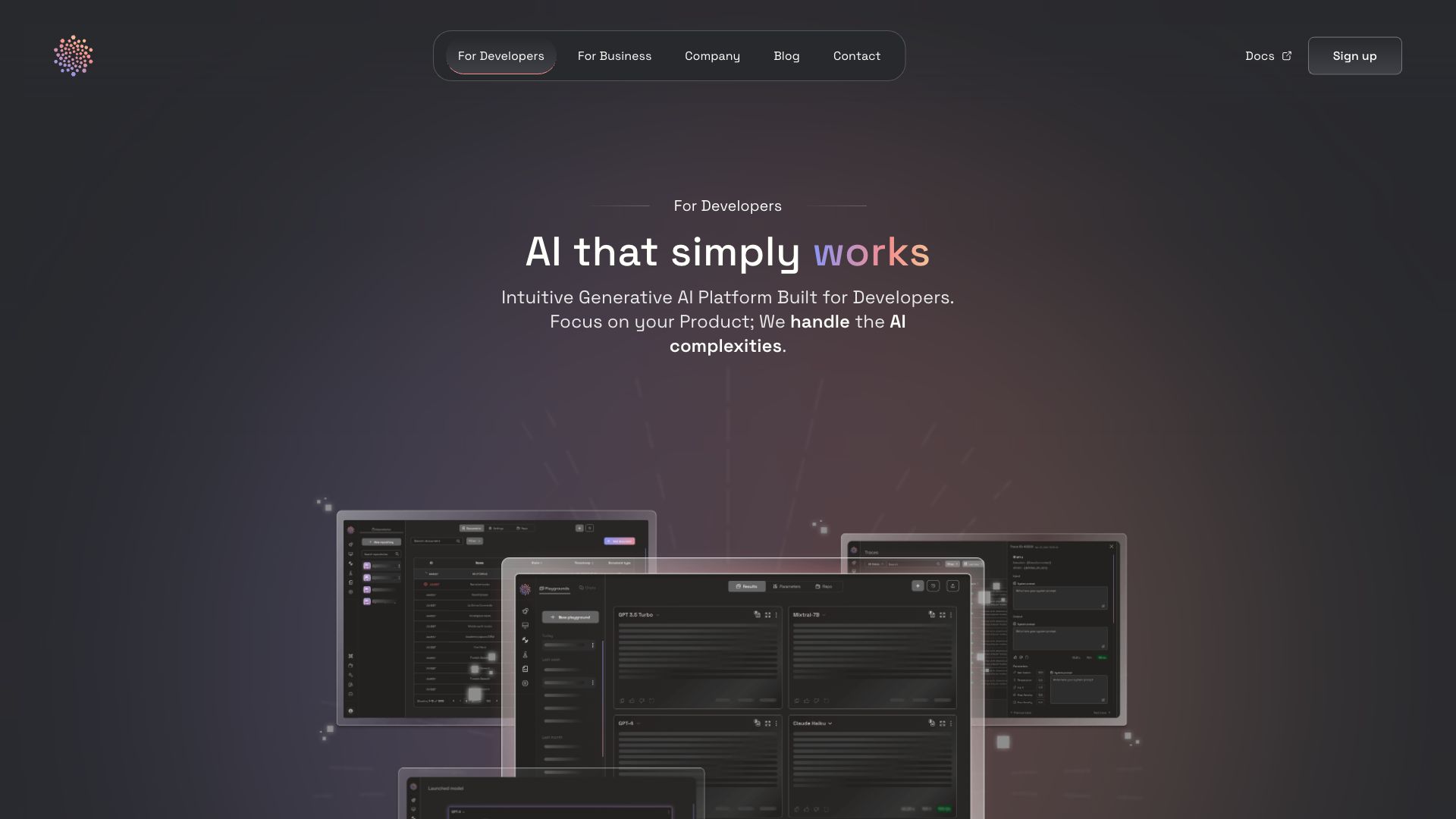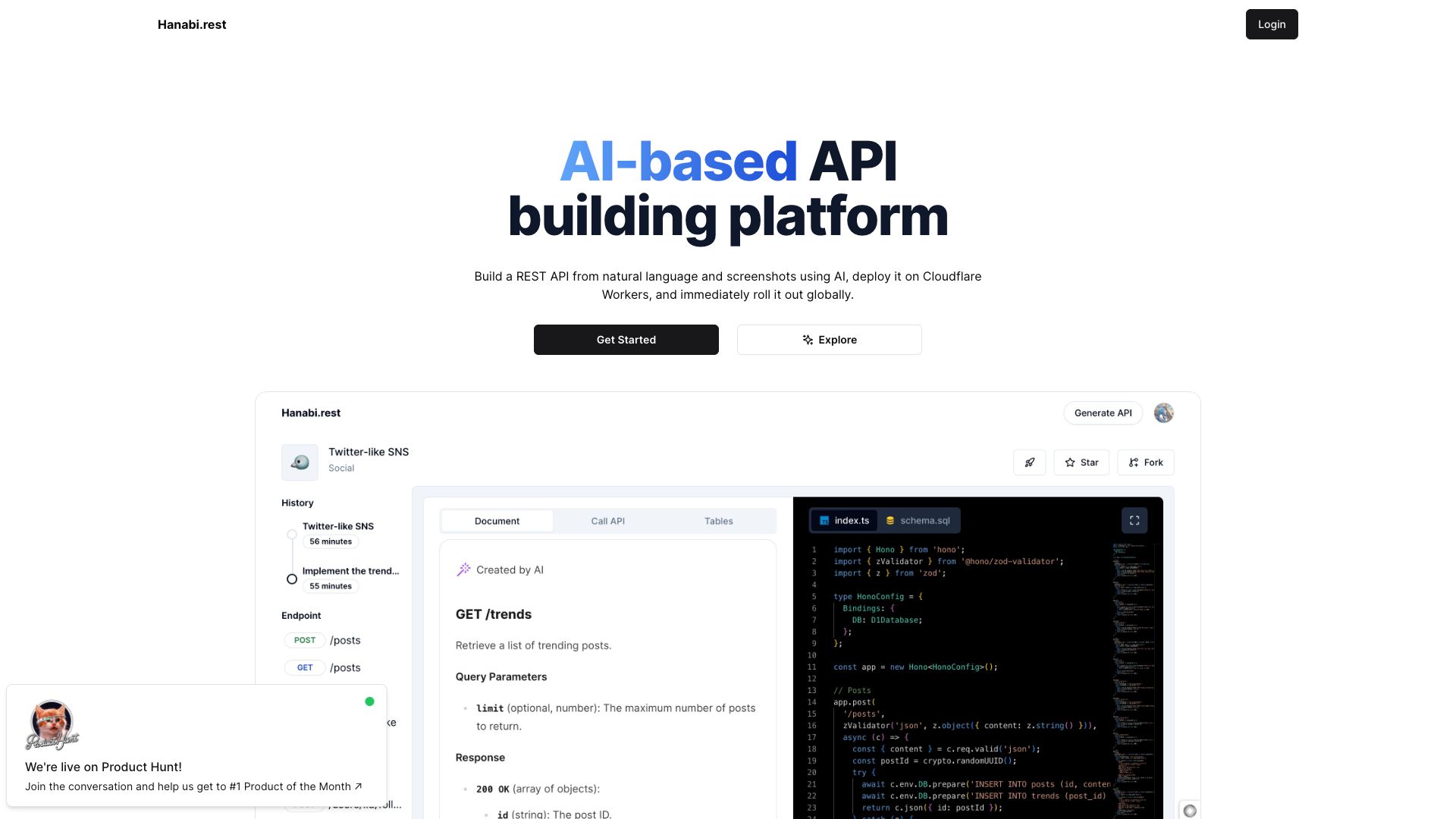Awesome AI API Design Tools in 2024
Discover the awesome 3 AI tools for 2024 By Candytools
Accelerating the advent of personalized LLMs.
Effortlessly remove image backgrounds with Optain's powerful AI API. Integrate seamlessly and automate your image editing workflow for fast, accurate, and scalable background removal.
Hanabi provides an API that uses AI to simplify and enhance online checkout processes. Increase conversions and reduce cart abandonment with our intelligent checkout solutions.
More AI Tools Categories
What is AI API Design?
AI API Design refers to the process of creating application programming interfaces (APIs) that allow developers to access and utilize AI functionalities within their own applications. This can range from simple tasks like sentiment analysis to complex ones like image generation or natural language understanding.
Here's a breakdown of key aspects of AI API Design:
1. Functionality:
- Core AI capabilities: This defines the specific AI tasks your API offers, such as:
- Natural Language Processing (NLP): Sentiment analysis, text summarization, machine translation, question answering.
- Computer Vision: Image recognition, object detection, image generation, video analysis.
- Machine Learning: Predictive modeling, recommendation systems, anomaly detection.
- Data handling: How does the API receive and process input data (text, images, numerical data)? What pre-processing or formatting is required?
- Output format: How are results delivered? This could be JSON, XML, plain text, or even image files depending on the AI function.
2. Usability:
- Clear documentation: Essential for developers to understand how to use the API effectively. This includes:
- Detailed descriptions of each endpoint and function.
- Code examples in various programming languages.
- Authentication and authorization procedures.
- Error handling and troubleshooting guidance.
- Ease of integration: The API should be simple to integrate into various programming languages and frameworks. RESTful principles are generally preferred for web-based APIs.
- Developer support: Provide resources like forums, tutorials, and dedicated support channels to help developers resolve issues and get the most out of the API.
3. Performance:
- Latency: Minimize the time it takes for the API to process requests and return results. This is crucial for real-time applications.
- Scalability: The API should be able to handle a growing number of requests without significant performance degradation. Cloud infrastructure and efficient server-side implementation are important considerations.
- Reliability: Ensure consistent availability and uptime for the API service.
4. Security:
- Authentication and authorization: Securely control access to the API and protect sensitive data. This often involves API keys, OAuth tokens, or other authentication mechanisms.
- Data encryption: Protect data in transit and at rest using encryption protocols like HTTPS and TLS.
- Rate limiting: Prevent abuse and denial-of-service attacks by limiting the number of requests from a single user or IP address.
Examples of AI APIs:
- Google Cloud AI Platform APIs: Offer a wide range of AI services, including NLP, Vision, and Machine Learning.
- Amazon Machine Learning: Provides APIs for building, training, and deploying machine learning models.
- Microsoft Azure Cognitive Services: Includes APIs for vision, speech, language, and decision-making.
Key Considerations for AI API Design:
- Specificity vs. Generality: Should the API focus on specific AI tasks or offer a broader range of capabilities?
- Cost: How will the API be priced? Common models include pay-per-use, subscription, or tiered pricing based on usage.
- Ethics and bias: Ensure the AI models used in the API are trained on unbiased data and do not perpetuate harmful stereotypes or discriminate against certain groups.
Designing effective AI APIs is crucial for making AI accessible to a wider audience and fostering innovation across various industries.


